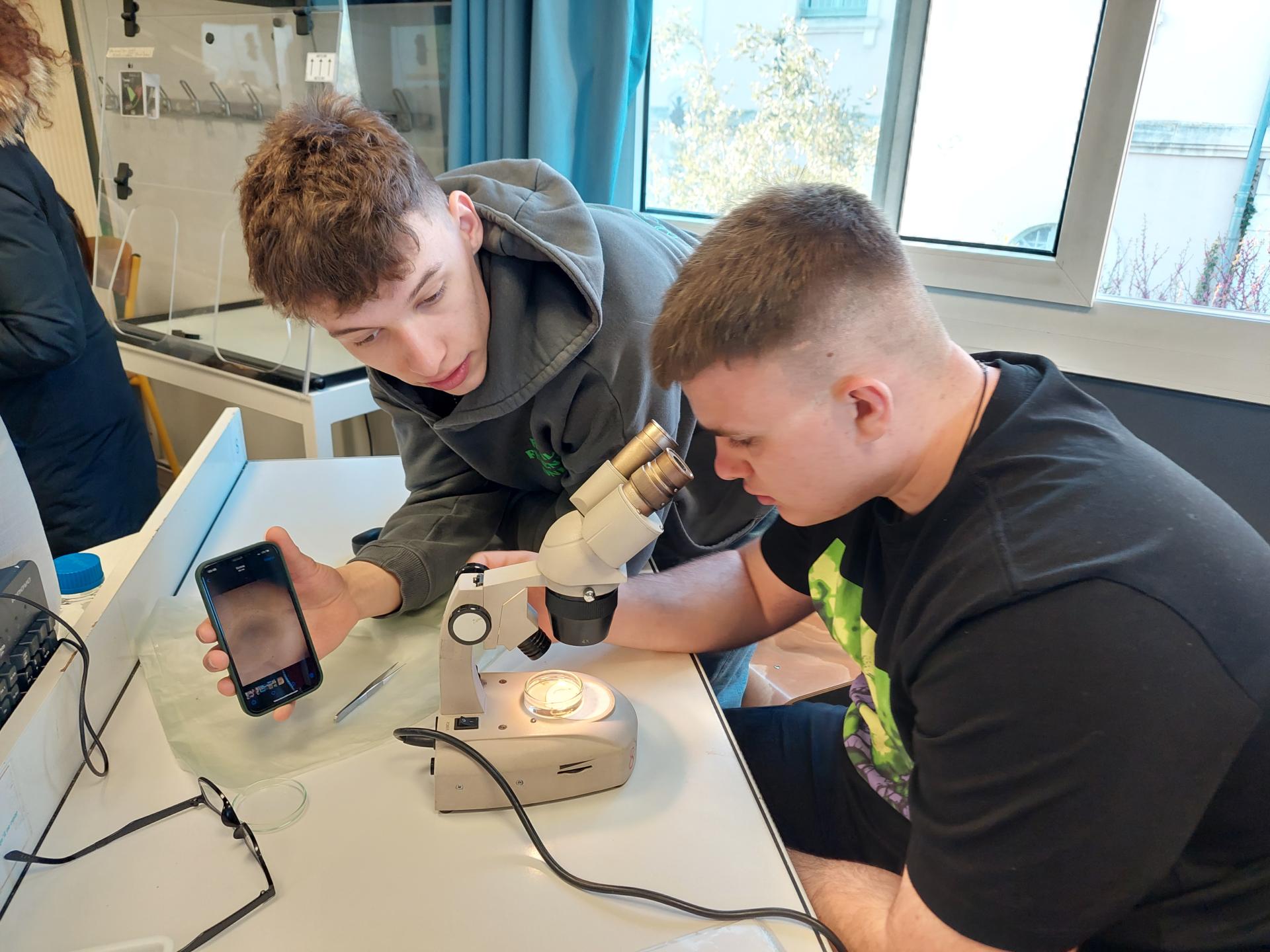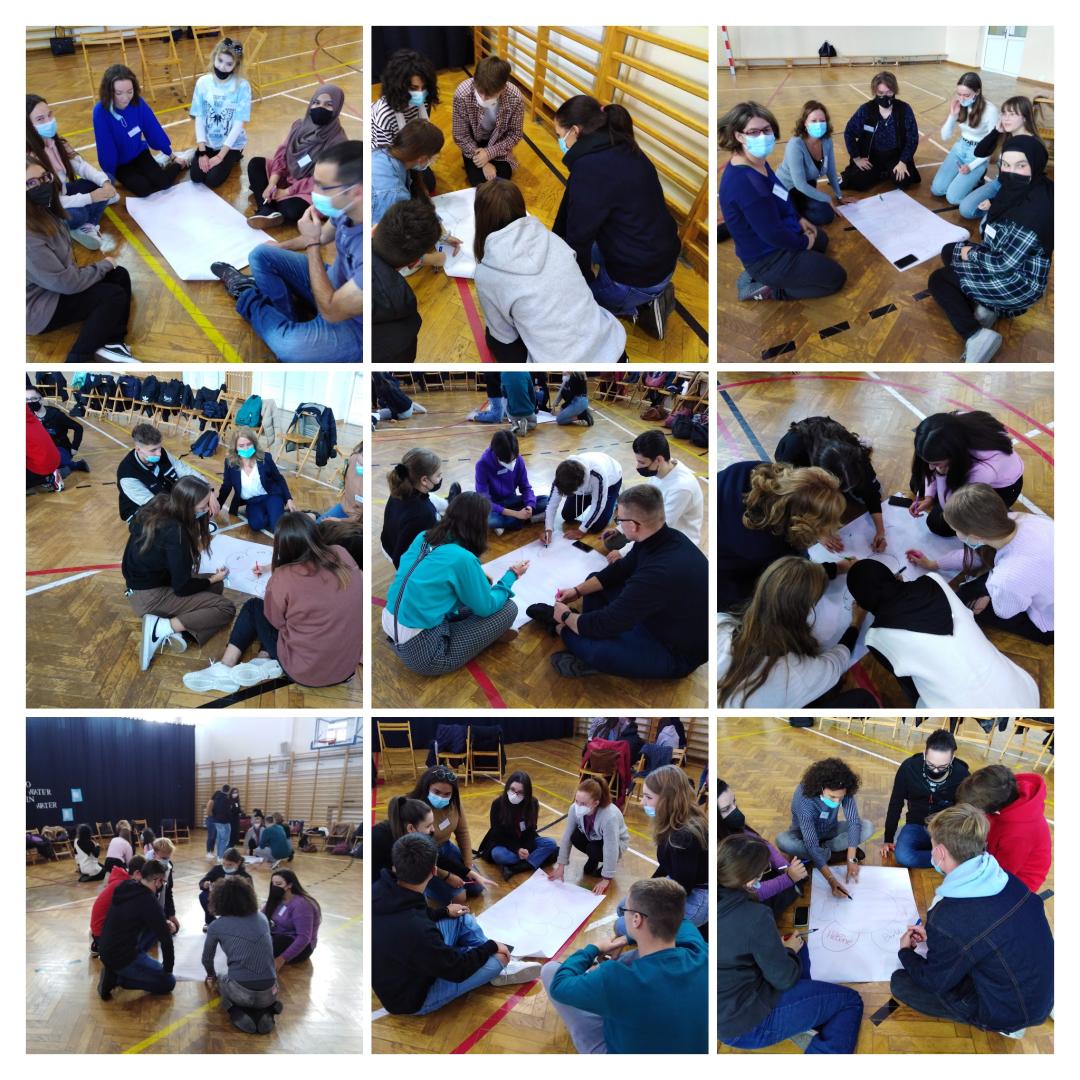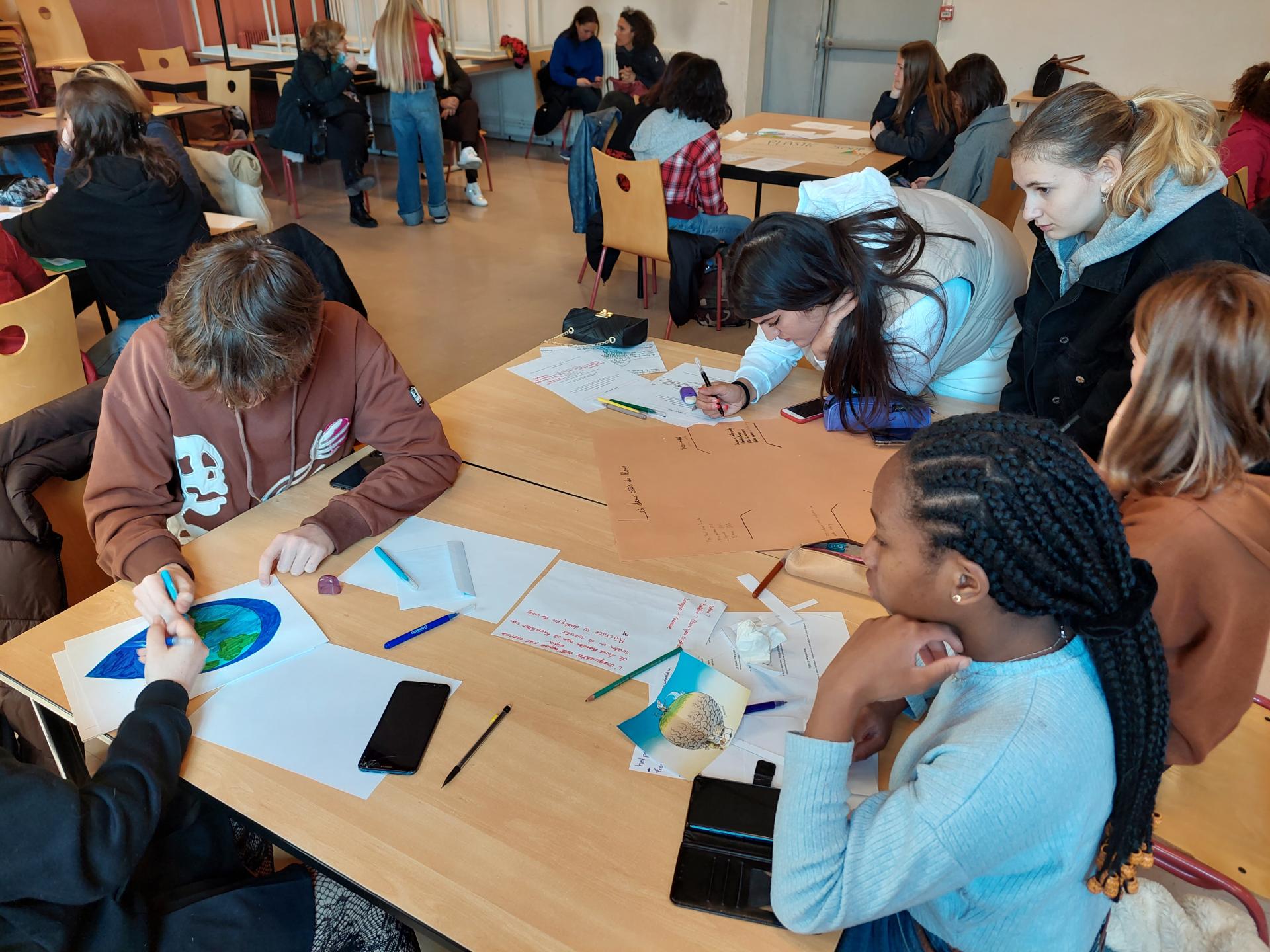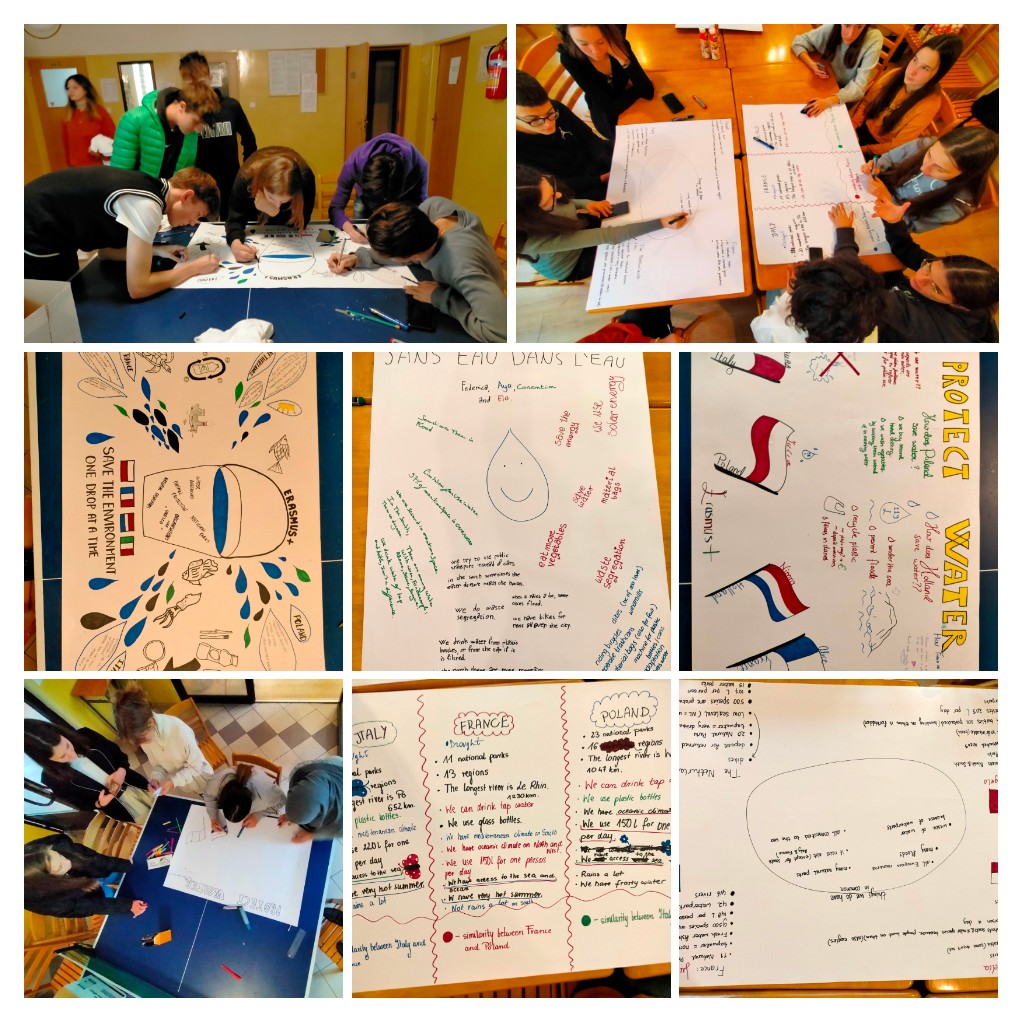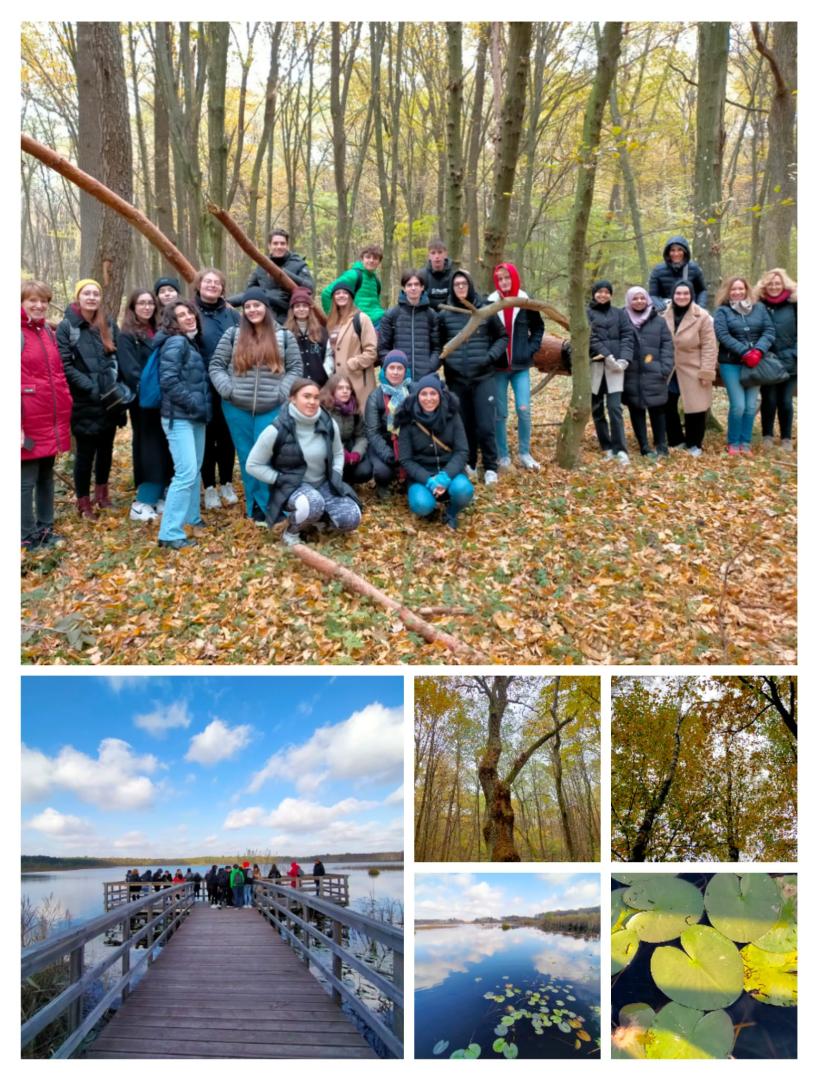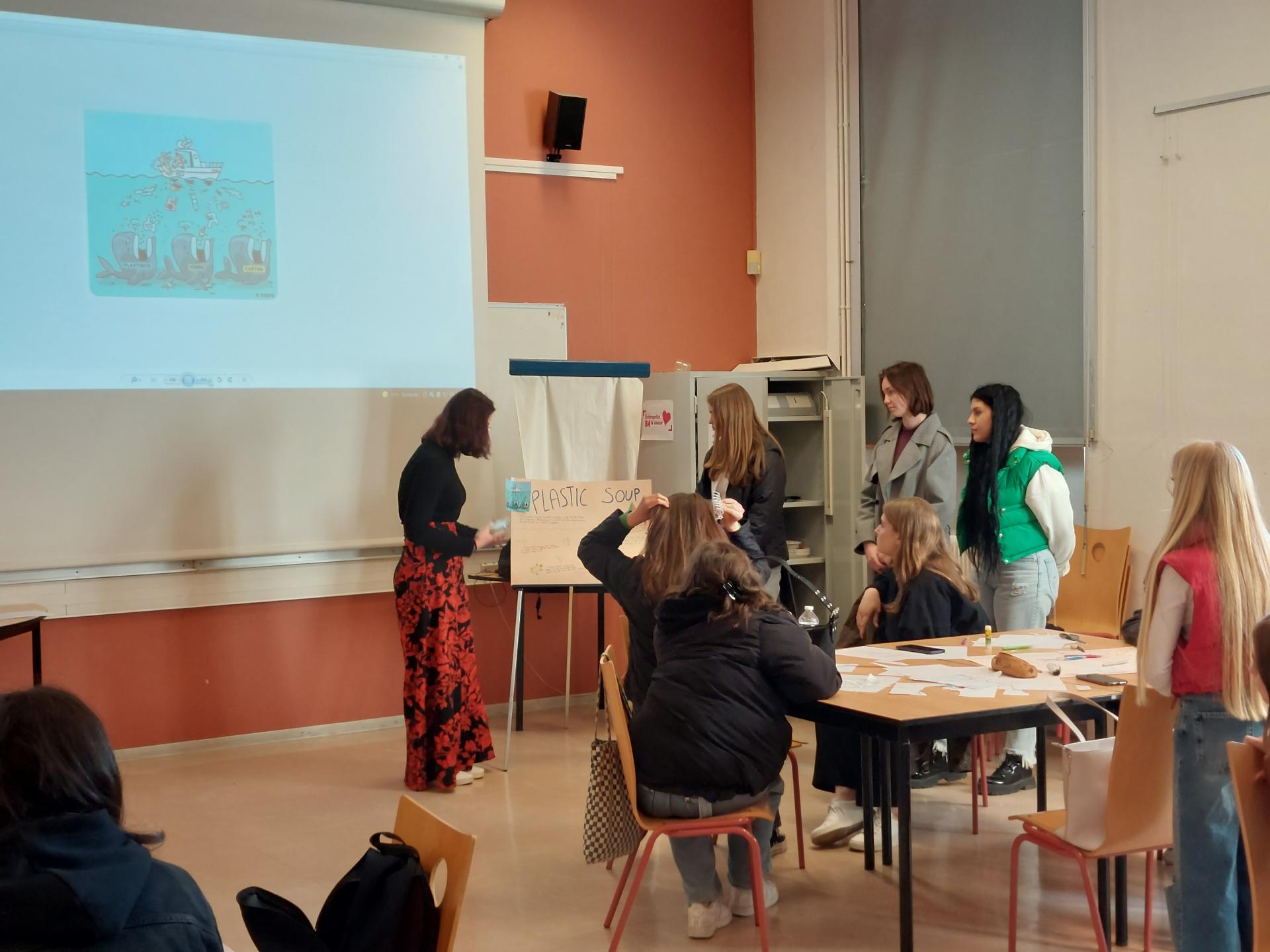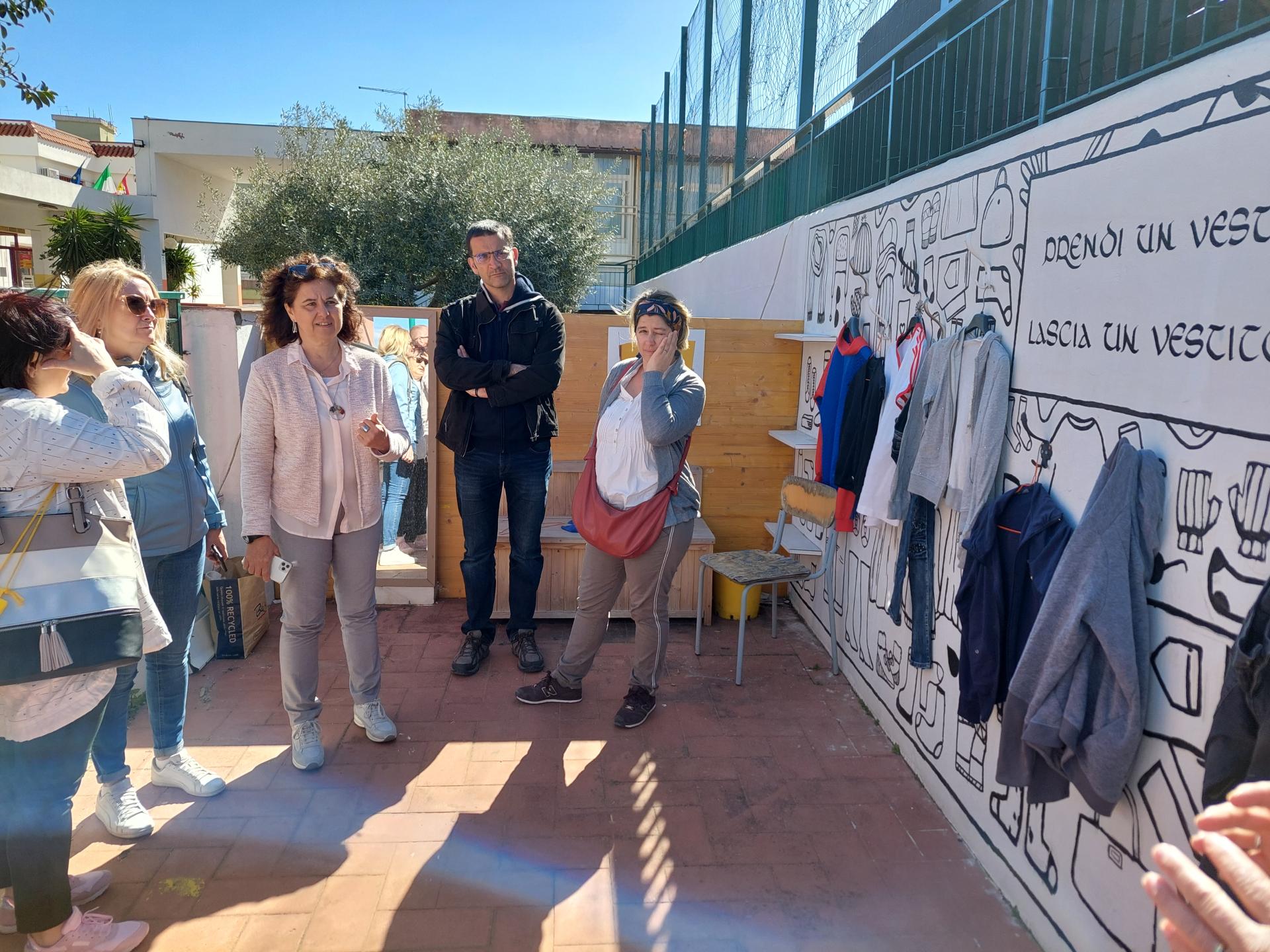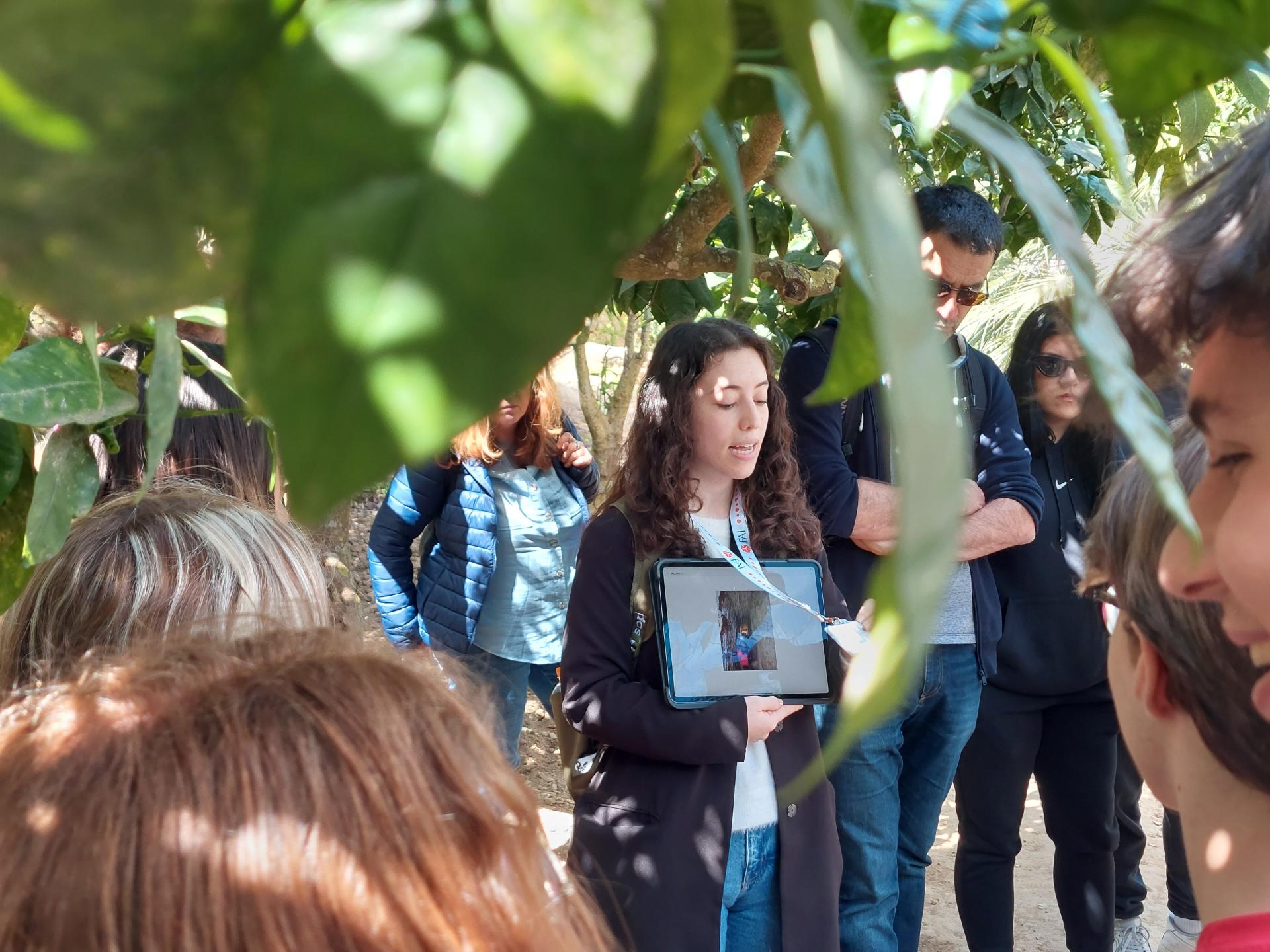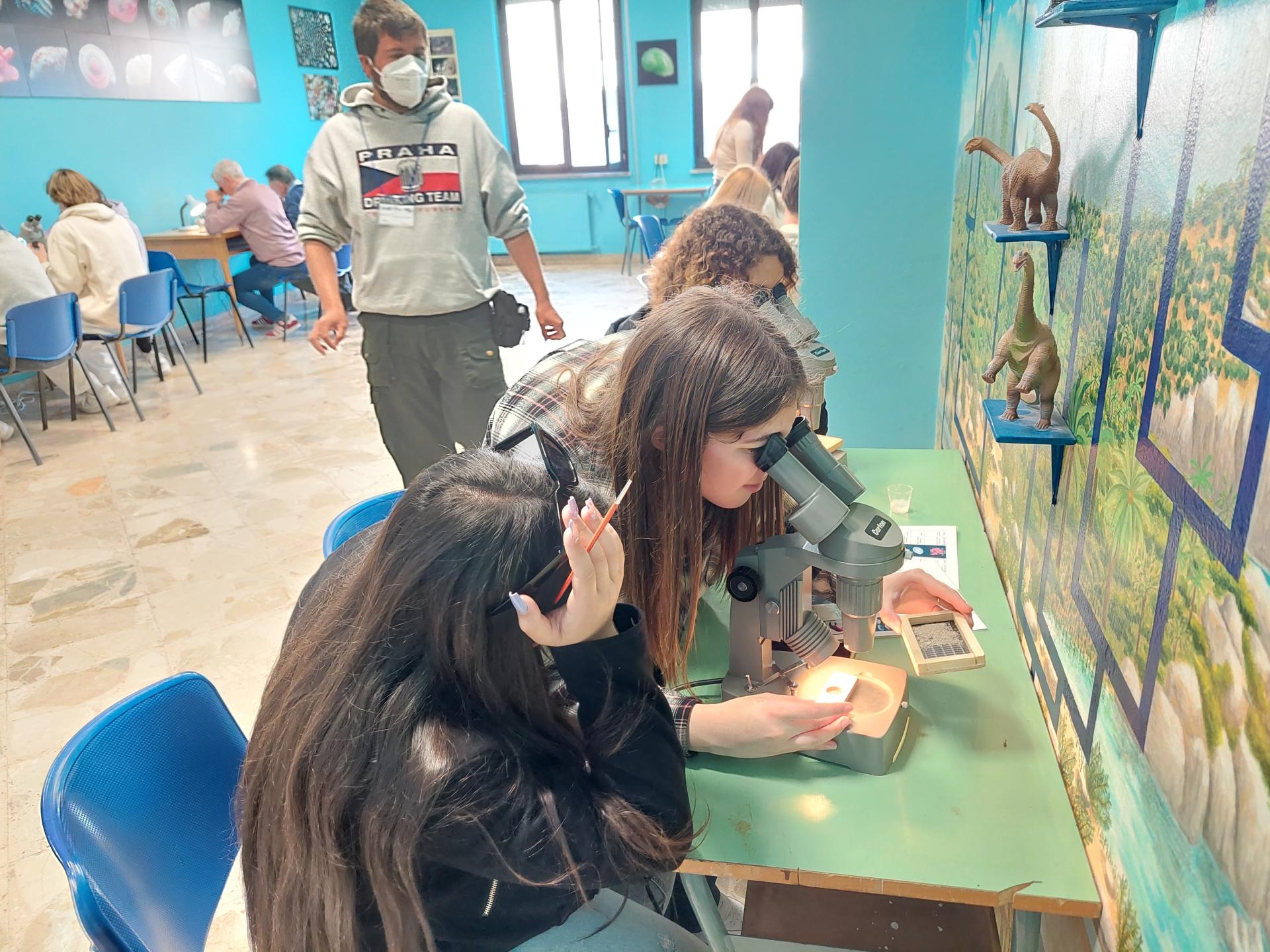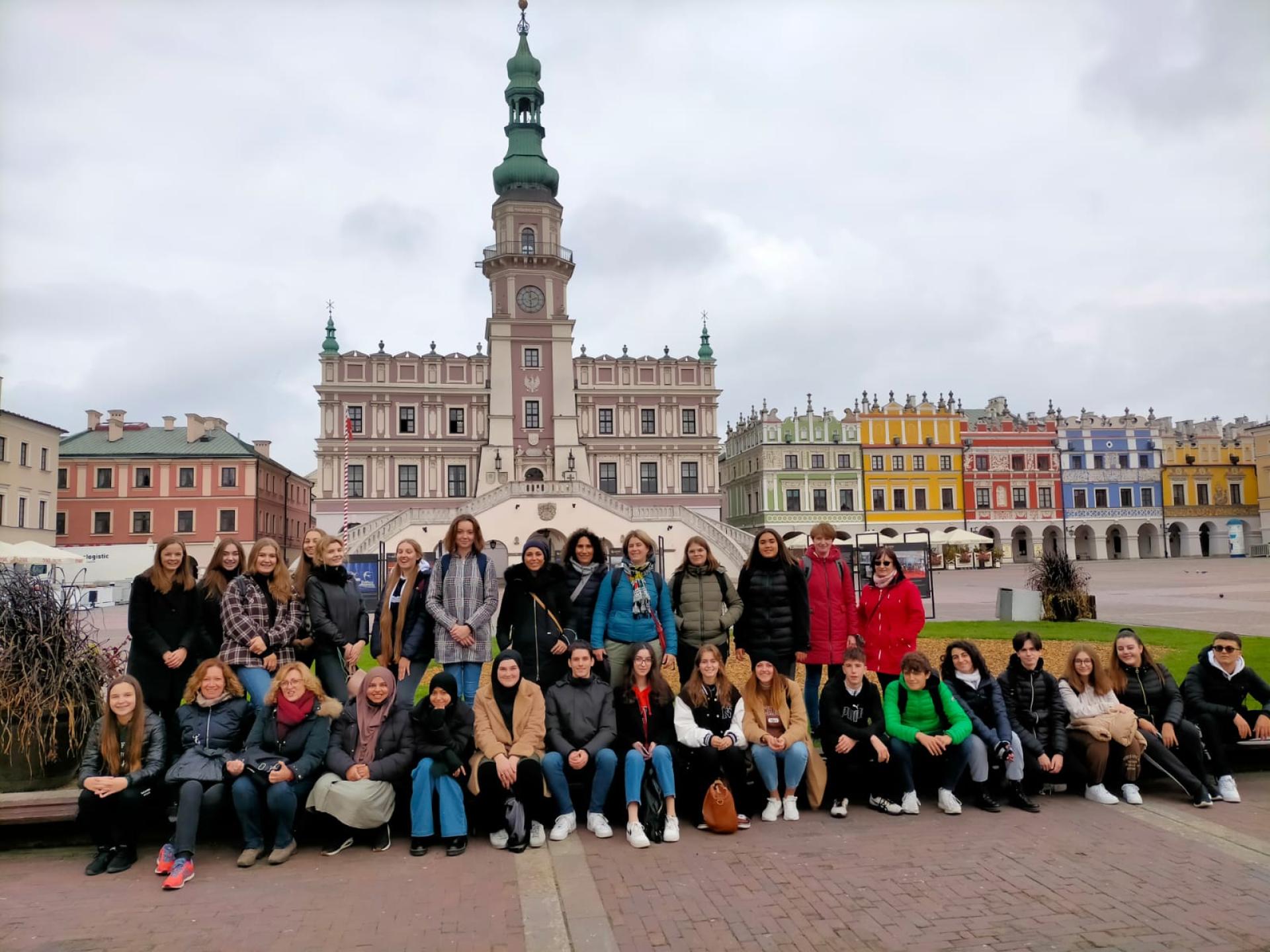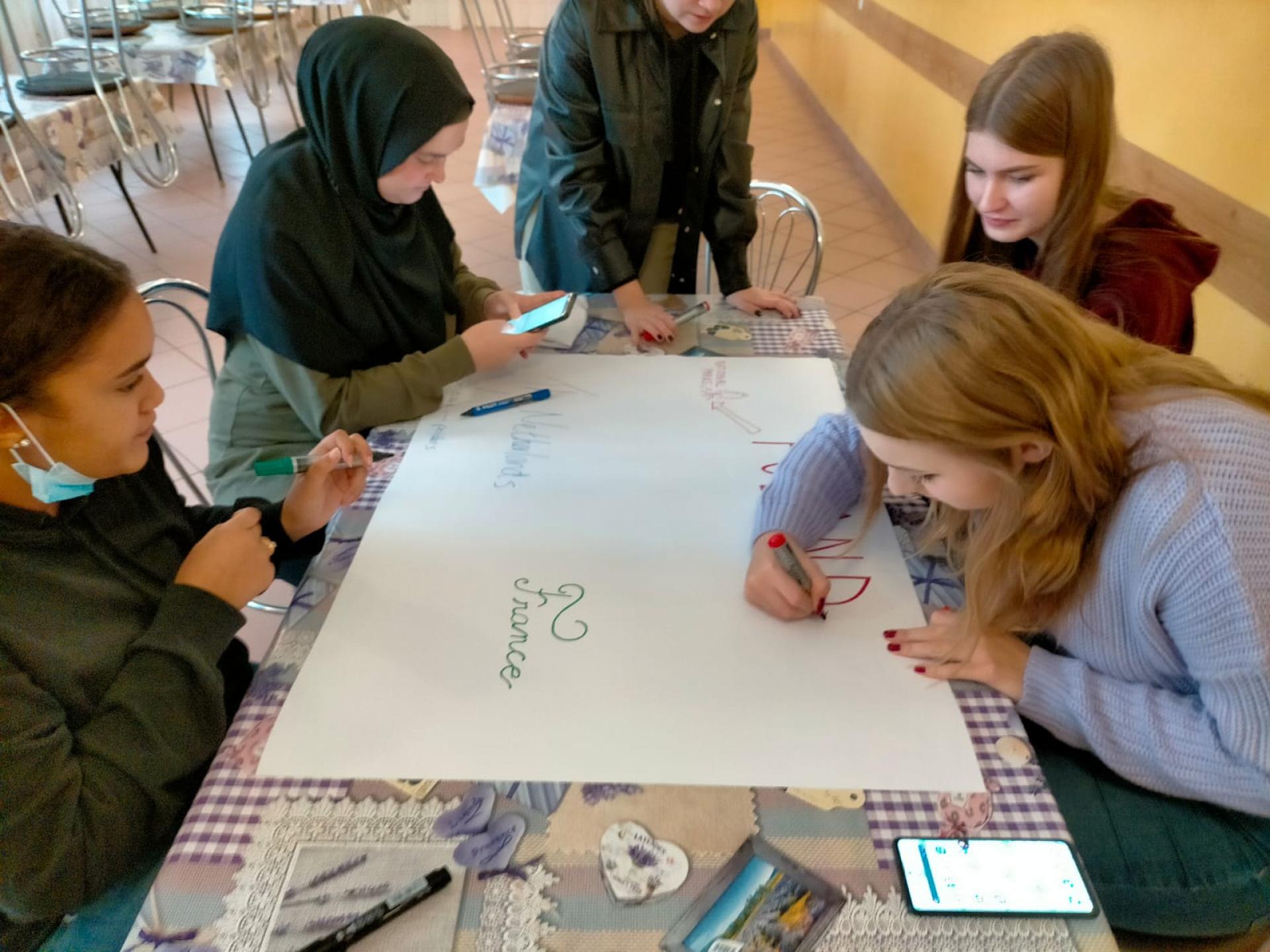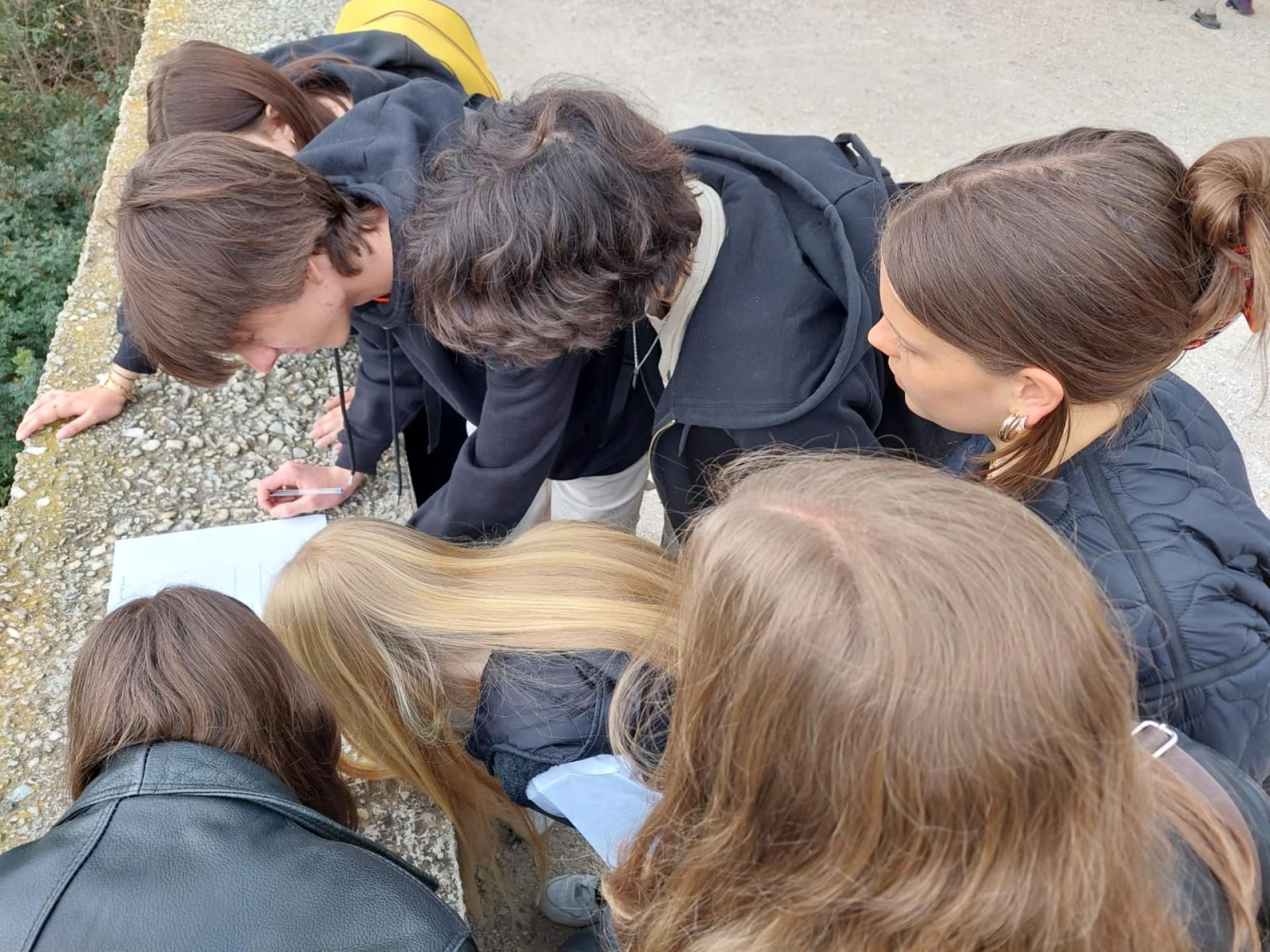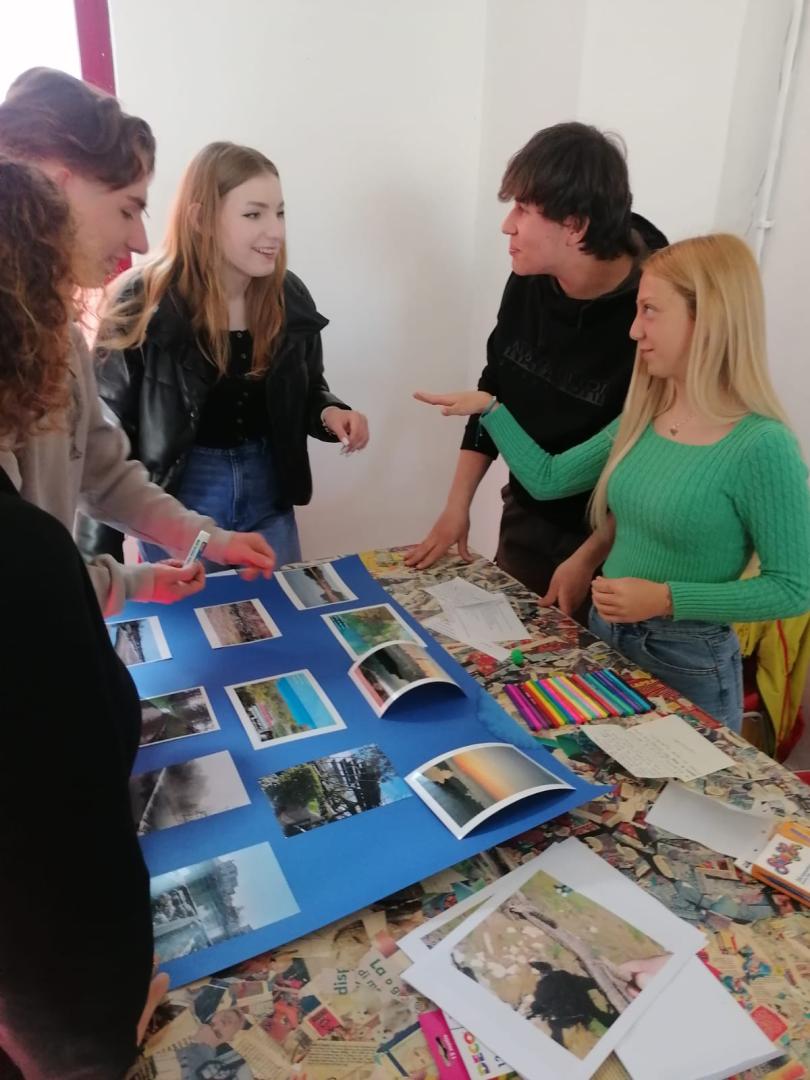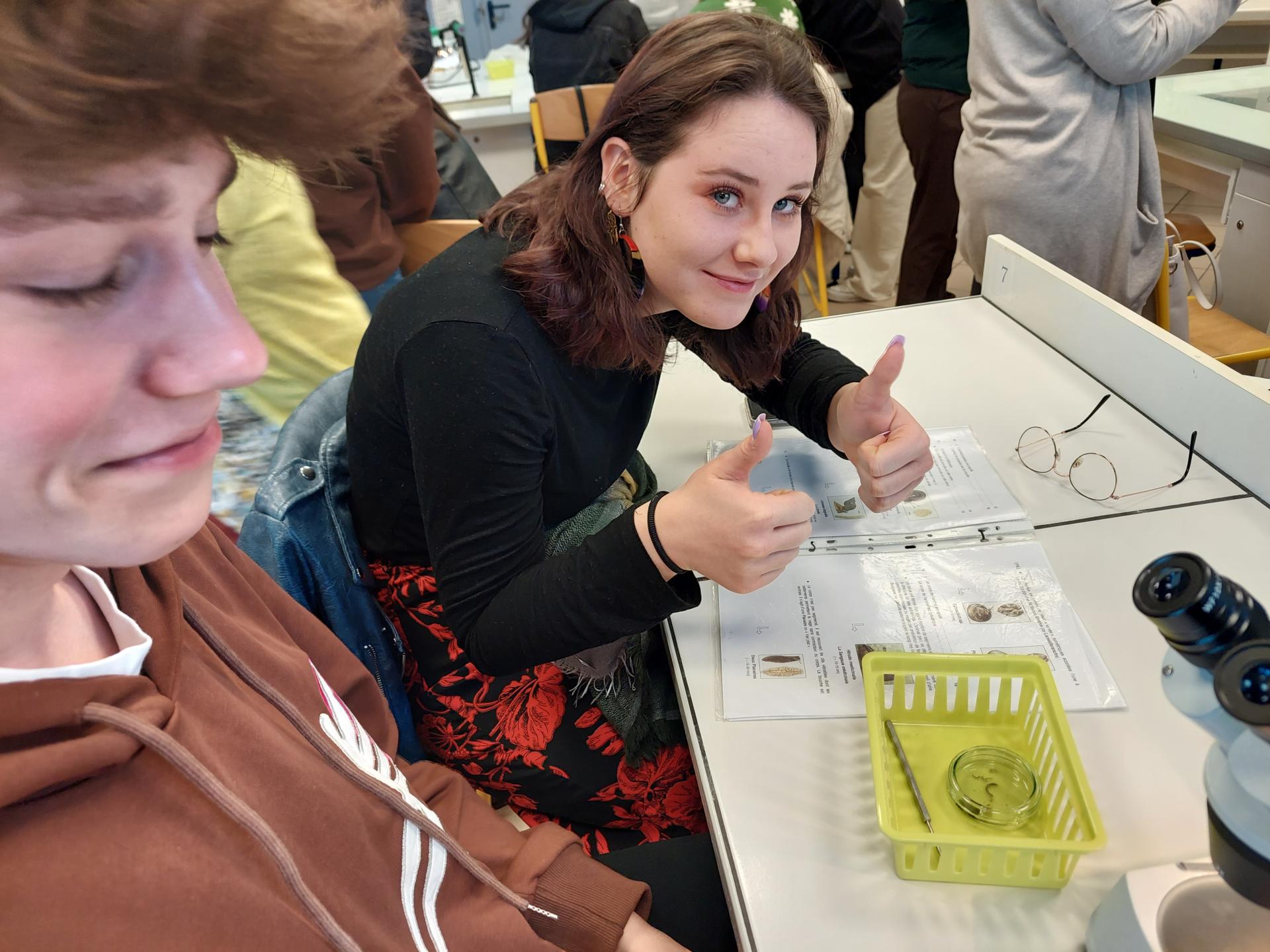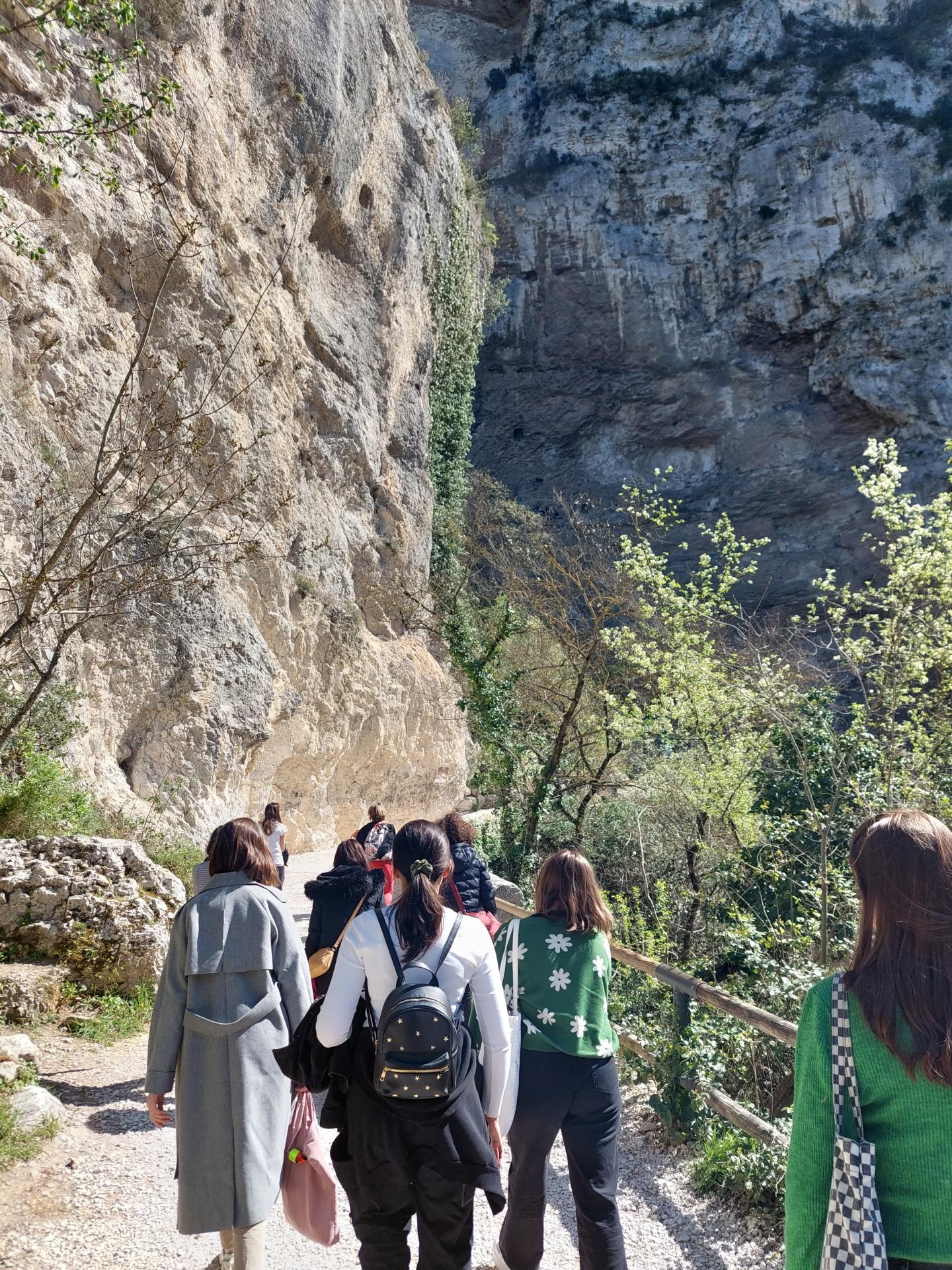No water in water.
Basic information
Project Title
No water in water.
Full project title
No water in water. Water as a precious resource on our planet. From detail to the general.
Category
Reconnecting with nature
Project Description
In our project, we focused on the protection of drinking water, gaining information on the sources of water in each partner region, possible ways to save water, ways to protect the environment and the unit's impact on European water management.
In international groups, we analyzed the problems of each region and worked together to find solutions.
Project participants also learned some of the culture and history of the partner countries.
In international groups, we analyzed the problems of each region and worked together to find solutions.
Project participants also learned some of the culture and history of the partner countries.
Geographical Scope
Cross-border/international
Project Region
CROSS-BORDER/INTERNATIONAL: France, Italy, Netherlands, Poland
Urban or rural issues
It addresses urban-rural linkages
Physical or other transformations
It refers to other types of transformations (soft investment)
EU Programme or fund
Yes
Which funds
ERASMUS
Description of the project
Summary
The main aim of the project was to raise the environmental awareness of the participants, with a particular focus on drinking water.
The target group was secondary school students aged 14 to 18 from Italy, France, Poland and the Netherlands, as well as science and language teachers.
Other objectives: - To increase students' awareness of environmental problems, the impact of human activities on the hydrogeological environment locally and also
European.
- to learn about different issues concerning water and water conservation.
- to develop behaviour leading to a reduction in drinking water consumption.
- strengthening the development of key competences.
- developing the language competences of students and teachers.
- strengthening cooperation, exchange of good practices and networking among participating schools.
The objectives set by the project have been achieved. Participants developed a project logo, presentations to familiarise themselves with and learn about the partner schools and towns. They developed questions for a survey on water consumption. They carried out surveys in the local environment, analysed the results and compared them with those of the other partner schools. Under the guidance of teachers, they developed a range of water-related issues. They participated in mobilities where they discussed water conservation issues and presented them to the others. They designed T-shirts to promote the project. The teachers developed lesson plans, presentations and worksheets. A project website was set up, where participants uploaded the results of their work.
Participants developed their linguistic and cultural competences: they found themselves in situations where they had to communicate in a foreign language, and the organisers of the mobility ensured that participants had the opportunity to immerse themselves not only in the natural environment of the country in question, but also its history and culture.
The target group was secondary school students aged 14 to 18 from Italy, France, Poland and the Netherlands, as well as science and language teachers.
Other objectives: - To increase students' awareness of environmental problems, the impact of human activities on the hydrogeological environment locally and also
European.
- to learn about different issues concerning water and water conservation.
- to develop behaviour leading to a reduction in drinking water consumption.
- strengthening the development of key competences.
- developing the language competences of students and teachers.
- strengthening cooperation, exchange of good practices and networking among participating schools.
The objectives set by the project have been achieved. Participants developed a project logo, presentations to familiarise themselves with and learn about the partner schools and towns. They developed questions for a survey on water consumption. They carried out surveys in the local environment, analysed the results and compared them with those of the other partner schools. Under the guidance of teachers, they developed a range of water-related issues. They participated in mobilities where they discussed water conservation issues and presented them to the others. They designed T-shirts to promote the project. The teachers developed lesson plans, presentations and worksheets. A project website was set up, where participants uploaded the results of their work.
Participants developed their linguistic and cultural competences: they found themselves in situations where they had to communicate in a foreign language, and the organisers of the mobility ensured that participants had the opportunity to immerse themselves not only in the natural environment of the country in question, but also its history and culture.
Key objectives for sustainability
Currently, a lot of attention is devoted to issues connected with sorting waste, recycling, environmental protection. In our project, we wanted to draw the attention of young people to the importance of caring for the environment, and in particular the care for drinking water resources. For this reason, we have set the following goals:
- raising students' ecological awareness related primarily to the care of drinking water resources.
- increasing students' awareness of environmental problems, the impact of human activities on the hydrogeological environment in local and European terms.
- getting acquainted with various issues related to water and its protection.
- developing habits leading to reduction of drinking water consumption.
In order to achieve their goals, project participants took part in classes on environmental protection, expanded their knowledge under the guidance of teachers, and developed and conducted a survey on drinking water. Based on it, they drew conclusions first about the local communities and then compared them with the conclusions drawn by the other partners. In this way, they explored differences in usage and related problems across different regions of Europe.
Through the implementation of this project, we have increased young people's knowledge of environmental protection, with a particular focus on drinking water, and shown them that they have a real impact on the state of water and the environment, not only in their region, but also in Europe.
- raising students' ecological awareness related primarily to the care of drinking water resources.
- increasing students' awareness of environmental problems, the impact of human activities on the hydrogeological environment in local and European terms.
- getting acquainted with various issues related to water and its protection.
- developing habits leading to reduction of drinking water consumption.
In order to achieve their goals, project participants took part in classes on environmental protection, expanded their knowledge under the guidance of teachers, and developed and conducted a survey on drinking water. Based on it, they drew conclusions first about the local communities and then compared them with the conclusions drawn by the other partners. In this way, they explored differences in usage and related problems across different regions of Europe.
Through the implementation of this project, we have increased young people's knowledge of environmental protection, with a particular focus on drinking water, and shown them that they have a real impact on the state of water and the environment, not only in their region, but also in Europe.
Key objectives for aesthetics and quality
The key objectives of the project were pursued during project group work in the individual partner schools and during international meetings. It was during the mobility organised in the partner countries that the participants gained the most cultural and aesthetic experiences. Through trips to Polesie National Park, Roztoczanski National Park, Fontaine-de-Vaucluse or Kolymbert Gardens, they were able to immerse themselves in the natural environment and experience the beauty of nature.
They gained cultural benefits by visiting historically important sites: Zamosc, Marseille, Nimes, Pont-du-Gard, Palermo, Agrigento. This enabled them to learn about the history of the places they visited and to compare the ways in which drinking water resources were used in the past and today.
They gained cultural benefits by visiting historically important sites: Zamosc, Marseille, Nimes, Pont-du-Gard, Palermo, Agrigento. This enabled them to learn about the history of the places they visited and to compare the ways in which drinking water resources were used in the past and today.
Key objectives for inclusion
Participants in the project were selected from among the students of the partner schools. Each partner applied its own rules for selecting participants. The participants included people of different religions, different cultures, as well as people with health problems (the Italian partner is an inclusive school) or economic problems. For most of the participants, the project mobility trips were their first trips abroad and gave them the opportunity to get to know the world.
During the project work, everyone worked in mixed groups: for example, each participant from a different country. Such work fostered integration and inclusion. Participants exchanged insights and discussed not only topics strictly related to the project, but those related to different religions or cultural differences. The young people were of a similar age, which facilitated contact.
Besides, social inclusion was fostered by activities organised by the participants during the mobility, but after the activities.
In terms of affordability, during the mobility, participants had no travel costs and were provided with financial individual support. The pocket money paid to them covered the costs of transport at the place of stay, entrance fees and other expenses (e.g. buying snacks).
During the project work, everyone worked in mixed groups: for example, each participant from a different country. Such work fostered integration and inclusion. Participants exchanged insights and discussed not only topics strictly related to the project, but those related to different religions or cultural differences. The young people were of a similar age, which facilitated contact.
Besides, social inclusion was fostered by activities organised by the participants during the mobility, but after the activities.
In terms of affordability, during the mobility, participants had no travel costs and were provided with financial individual support. The pocket money paid to them covered the costs of transport at the place of stay, entrance fees and other expenses (e.g. buying snacks).
Results in relation to category
The achieved results include, above all, increasing the pro-ecological awareness of students and teachers, understanding the importance of the attitude of individual people and their activities for the natural environment, conscious use of drinking water resources and developing behaviors leading to saving water and respecting nature, knowledge about the impact of local activities on the natural environment throughout Europe. Other results include: development of key competences in all project participants, knowledge
good practices used in schools participating in the project, related to teaching natural sciences, with particular attention to issues related to environmental protection. As well as exchange of experiences regarding teaching foreign languages and the use of foreign languages in teaching other subjects. And material results in the form of a survey and the preparation of its results, a film about the project, lesson plans, materials that can be used by other teachers, electronic and paper presentations, and T-shirts.
The participants' linguistic competences were improved. Thanks to contact with project participants from different countries and cultures, students and teachers became more open to otherness and diversity. The participants broadened their horizons and noticed that they are not only members of the local community, but that they are part of Europe and their activities affect the environment not only in the immediate vicinity.
Teachers' competences were improved, both professional, linguistic and organizational skills. The accumulated experience regarding workshops and work organization during science and foreign language lessons, as well as building relationships with students, allowed for the introduction or planning of the introduction of observed good practices in home schools, which in the long run will lead to improvement in the level and quality of education.
good practices used in schools participating in the project, related to teaching natural sciences, with particular attention to issues related to environmental protection. As well as exchange of experiences regarding teaching foreign languages and the use of foreign languages in teaching other subjects. And material results in the form of a survey and the preparation of its results, a film about the project, lesson plans, materials that can be used by other teachers, electronic and paper presentations, and T-shirts.
The participants' linguistic competences were improved. Thanks to contact with project participants from different countries and cultures, students and teachers became more open to otherness and diversity. The participants broadened their horizons and noticed that they are not only members of the local community, but that they are part of Europe and their activities affect the environment not only in the immediate vicinity.
Teachers' competences were improved, both professional, linguistic and organizational skills. The accumulated experience regarding workshops and work organization during science and foreign language lessons, as well as building relationships with students, allowed for the introduction or planning of the introduction of observed good practices in home schools, which in the long run will lead to improvement in the level and quality of education.
How Citizens benefit
In addition to the participants, the project involved the school community of the partner schools, the families of the participants and people living in their neighbourhood and community. The participants prepared a water survey, which was one of the key elements of the project. It was administered to the aforementioned groups, which allowed it to be analysed later and relevant conclusions to be drawn.
In addition, the school community was involved in the preparation of the mobility activities and the families of the participants were also host families or involved in helping the participants during the mobility (e.g. by facilitating the transportation of the participants after the activities).
In addition, the school community was involved in the preparation of the mobility activities and the families of the participants were also host families or involved in helping the participants during the mobility (e.g. by facilitating the transportation of the participants after the activities).
Physical or other transformations
It refers to other types of transformations (soft investment)
Innovative character
What was innovative for us in this project was the approach to working with participants. They did not work in their regular groups (school classes), but in a project group diversified both at the level of schools and the entire partnership. They worked in international groups in which they were forced to communicate in a foreign language - which was new for most of the participants and influenced the development of their linguistic and social competences. Moreover, the participants took advantage of the opportunities of various institutions with which cooperation was established in order to better implement this project.
Disciplines/knowledge reflected
In the design and implementation of project activities, the following fields were taken into account: geography, biology, chemistry, history and languages: English, French, Italian.
Teachers teaching these areas in individual schools were involved in the project. They conducted additional classes for project participants or implemented topics related to drinking water and environmental protection for the school community. They worked with project participants, guiding them in exploring water-related topics identified in the project. They prepared and conducted workshops for project participants during mobility.
Representatives of these fields cooperated with each other in individual partner schools, developing a schedule of activities at the school and organizing mobility workshops. Science teachers and foreign language teachers also cooperated in organizing these workshops.
The added value was establishing cooperation between science and foreign language teachers, because so far it had not existed in most partner schools.
Teachers teaching these areas in individual schools were involved in the project. They conducted additional classes for project participants or implemented topics related to drinking water and environmental protection for the school community. They worked with project participants, guiding them in exploring water-related topics identified in the project. They prepared and conducted workshops for project participants during mobility.
Representatives of these fields cooperated with each other in individual partner schools, developing a schedule of activities at the school and organizing mobility workshops. Science teachers and foreign language teachers also cooperated in organizing these workshops.
The added value was establishing cooperation between science and foreign language teachers, because so far it had not existed in most partner schools.
Methodology used
Based on the main design goals, tasks and topics related to water were developed. The tasks were carried out by project participants - first in school groups or individually (depending on the task), then the results were posted on the project website. In the case of larger tasks (conducting a survey on water consumption), they were divided into stages. The results of each of these stages were presented to the remaining participants from other schools and they moved on to the next stage. After conducting the survey, the analysis took place online in international groups.
In the case of topics related to water, students participated in thematic classes and then worked individually under the supervision of teachers. They shared the knowledge they acquired on particular topics with other participants during mobility. Also during mobility, we worked in international groups, where students had to complete tasks and create presentations together.
In the case of topics related to water, students participated in thematic classes and then worked individually under the supervision of teachers. They shared the knowledge they acquired on particular topics with other participants during mobility. Also during mobility, we worked in international groups, where students had to complete tasks and create presentations together.
How stakeholders are engaged
The proposal for cooperation and the general idea for the project came from the Italian partner. Each partner gave their opinion and proposed changes taking into account the possibilities and needs of their school and its community. Together, the aims of the project and the ways to achieve them were established. This was done through instant messaging, email correspondence and online meetings. In addition, online meetings were held prior to the start of the individual tasks to make any changes to the timetable or the way in which the objectives were to be achieved. This is how cooperation at European level worked.
At national level, cooperation between partners and Erasmus+ National Agencies took place. The coordinators of the individual partner schools communicated with the project supervisors at these institutions, participated in training sessions and provided the necessary information.
At the regional and local level, there was cooperation between project partners and school managing institutions in individual towns. Also between partners and institutions such as Poleski National Park, Roztoczański National Park, Salines, Whitaker Museum and Gemmellaro Geological Museum, thanks to which the full implementation of the project's goals was possible.
At national level, cooperation between partners and Erasmus+ National Agencies took place. The coordinators of the individual partner schools communicated with the project supervisors at these institutions, participated in training sessions and provided the necessary information.
At the regional and local level, there was cooperation between project partners and school managing institutions in individual towns. Also between partners and institutions such as Poleski National Park, Roztoczański National Park, Salines, Whitaker Museum and Gemmellaro Geological Museum, thanks to which the full implementation of the project's goals was possible.
Global challenges
The project concerned a global and very important topic: the protection of drinking water. During its implementation, participants raised their ecological awareness, primarily related to caring for drinking water resources, environmental problems, and the impact of human activity on the hydrogeological environment, both locally and in Europe. They learned about various issues related to water and its protection. They developed behaviors leading to reduced consumption of drinking water. During the project, they learned that an individual has an impact on water management not only in their own local environment, but also in Europe and the world by saving water and, above all, making the right consumption choices.
Learning transferred to other parties
First of all, the material results obtained during the project implementation, such as: a survey on water consumption (it can be used to examine the local environment), lesson plans (Spanish classes on water in the world, water footprint, water virtual), worksheets and ideas for conducting lessons related to water and environmental protection, presentations about water and how to test water purity.
The general outline of the project and its goals can also be repeated, because the idea of promoting care for the environment and drinking water is very important for the future of our planet.
The general outline of the project and its goals can also be repeated, because the idea of promoting care for the environment and drinking water is very important for the future of our planet.
Keywords
water saving
environment
language skills
cultural heritage
friendship


